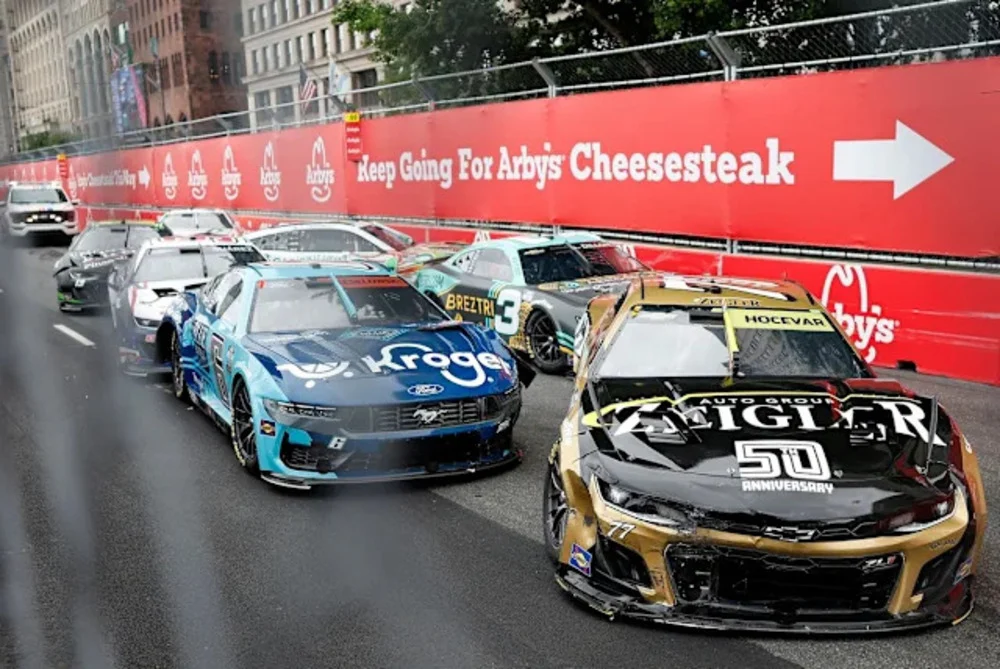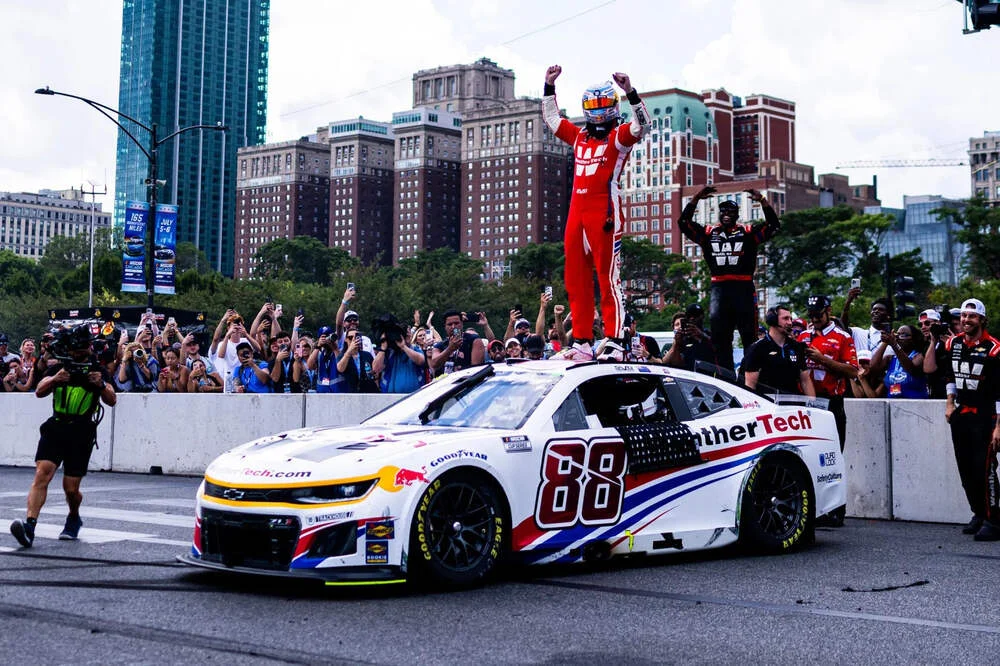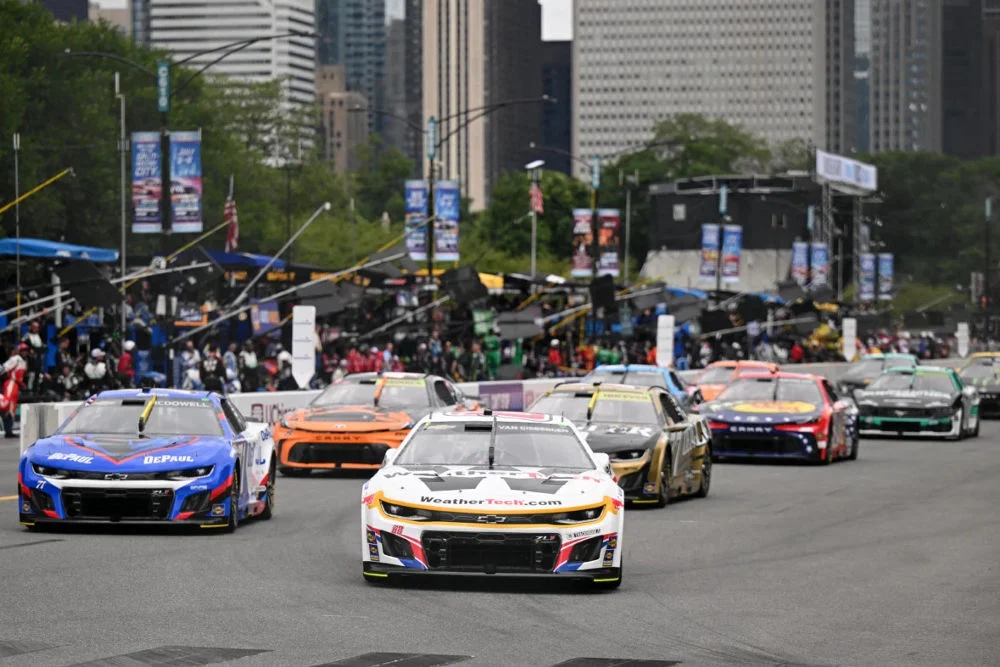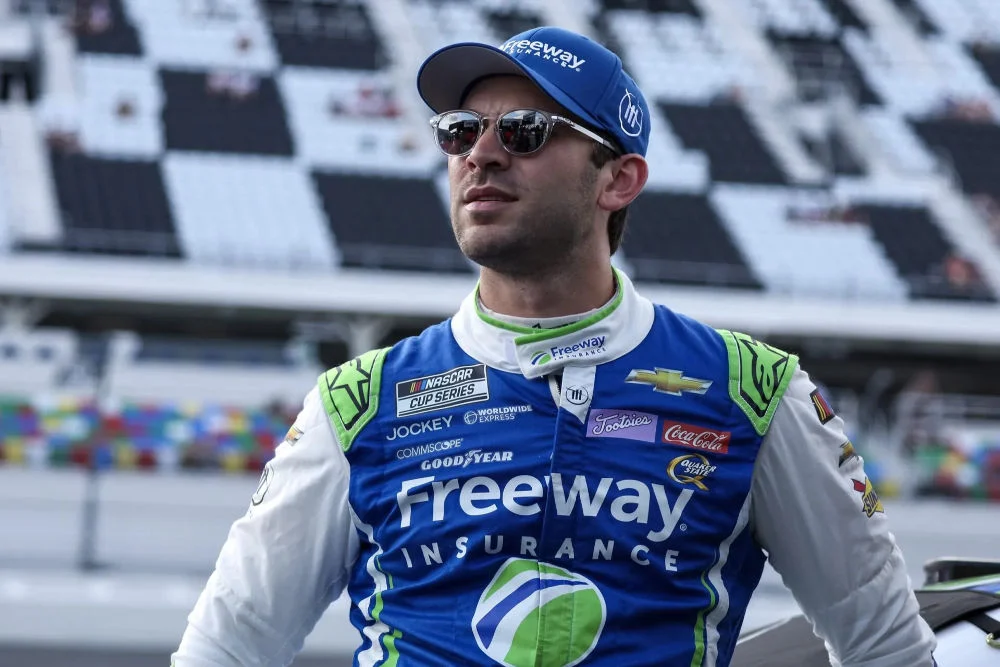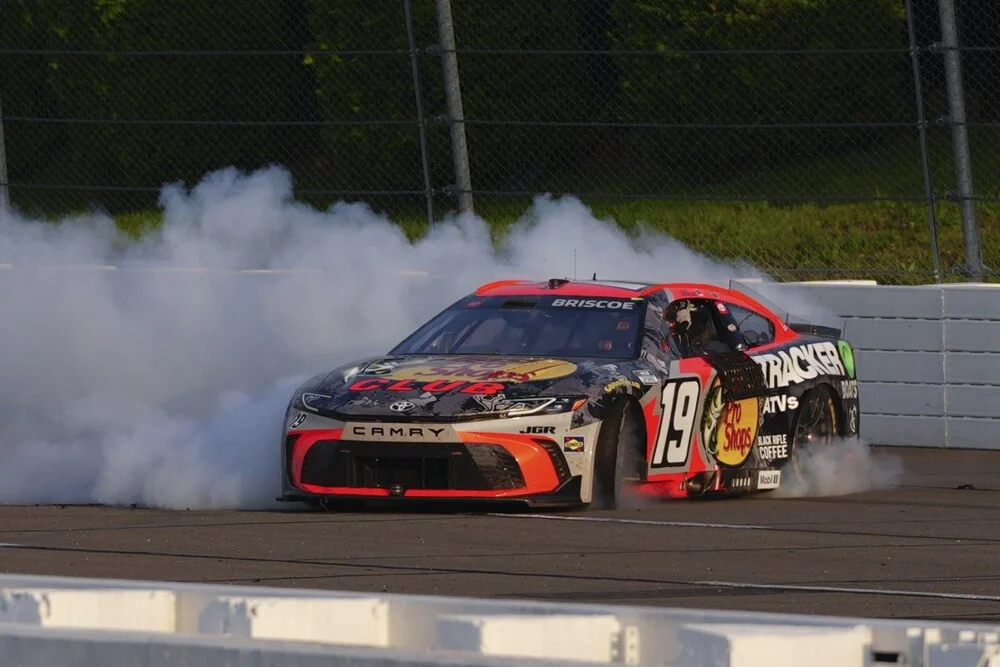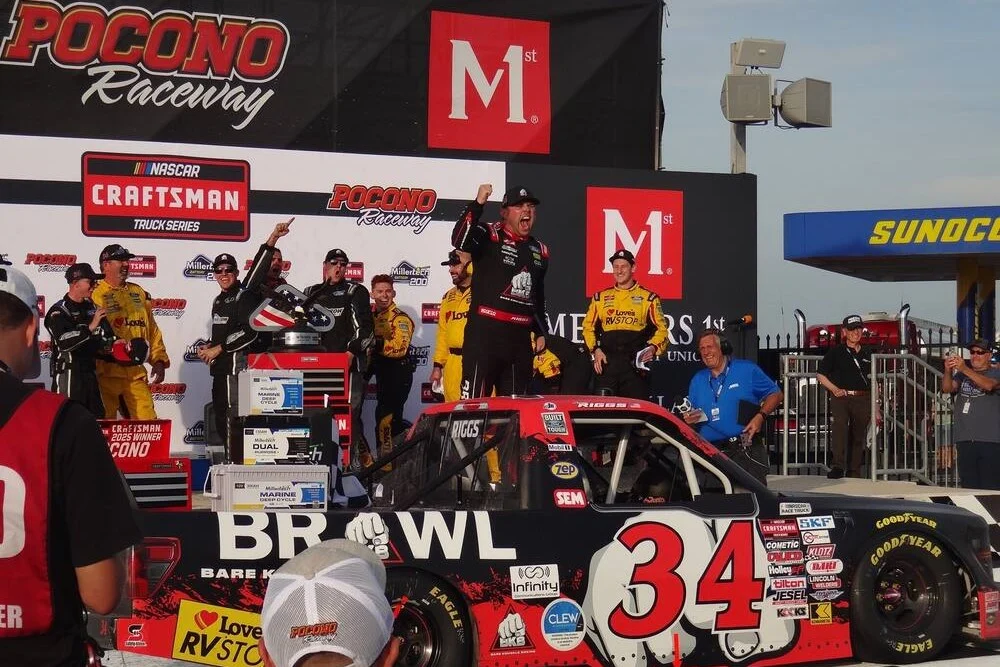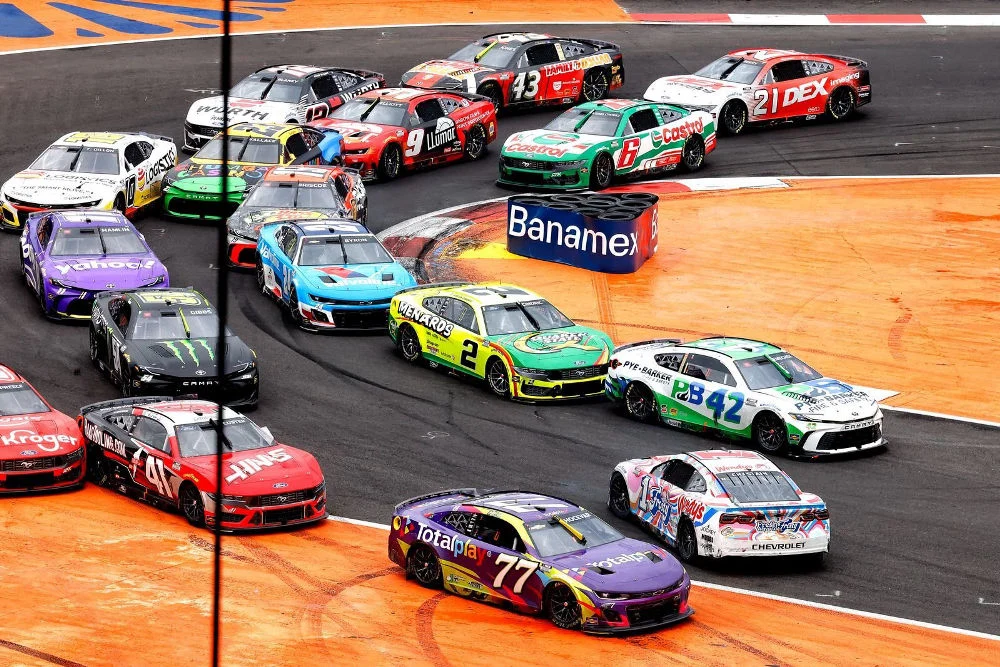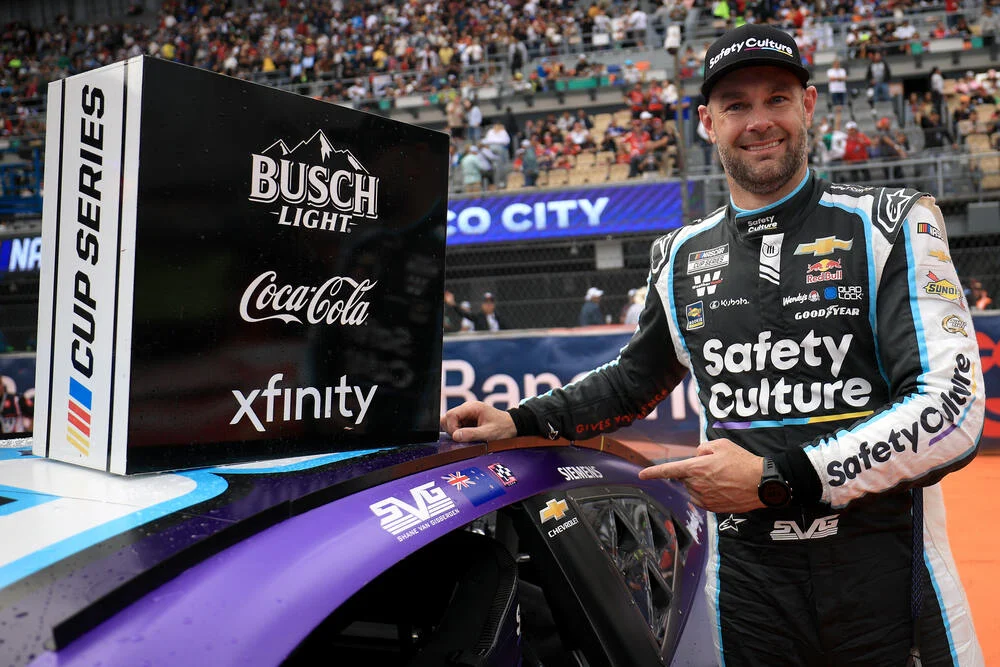A massive eight-car pile up in the opening laps and Cody Ware’s high-speed collision were among the major NASCAR Chicago crashes that defined the chaotic Grant Park 165.
The race saw a total of six yellows and two cautions as the relentless pace of incidents kept teams and drivers on edge. Each restart brought renewed risk as competitors jockeyed for position on the narrow, unforgiving layout.
The race’s pivotal moment came shockingly early on the third lap after Carson Hocevar who was running in seventh lost control exiting Turn 10. His No. 77 Spire Motorsports Chevrolet clipped both the right and left walls, damaging the suspension and sending the car spinning back across the racing line.
The result was a catastrophic chain reaction as the field barreled into the blind corner, with little warning and nowhere to go.
Austin Dillon was the first to make contact with Carson Hocevar’s wreckage before Brad Keselowski, Daniel Suárez, Todd Gilliland, Riley Herbst, and Supercars champion Will Brown plowed into the melee in rapid succession, all sustaining heavy damage and completely blocked the track.
Trouble strikes early!
— NASCAR (@NASCAR) July 6, 2025
A big pileup collects several cars, including multiple In-Season Challenge contenders! pic.twitter.com/Gc9XdG3BIR
The severity of the incident immediately brought out the first full-course caution and moments later a red flag as safety crews scrambled to clear the wreckage with the stoppage lasting nearly 15 minutes.
Several drivers, including Hocevar, Dillon, Keselowski, Gilliland, and Brown, were unable to continue, their races over almost as soon as they had begun.
For others, including AJ Allmendinger, Josh Berry, Austin Cindric, and Cole Custer, the incident resulted in significant damage and compromised performance for the remainder of the event.
The cause of the crash was a subject of immediate debate as Spotters were unable to provide timely warnings to their drivers due to the circuit’s tight confines and limited sightlines.
Radio communication issues, particularly around Turn 10 and the adjacent straightaway, further complicated the race. Several drivers reported “dead zones” where messages from the pits and spotters failed to reach them, leaving them vulnerable to the unfolding disaster ahead.
The combination of these factors created a perfect storm, one that exposed the inherent risks of street course racing and the critical importance of clear communication and robust safety protocols.
Yet, the drama was far from over. The Chicago Street Race, by its very nature, is prone to incidents, and this year’s edition proved no exception. The event saw a total of six yellow flags with each bunching up the field and creating fresh opportunities for contact and controversy.
Notably, one caution was thrown to allow an ambulance to access the circuit and attend to a spectator medical emergency, a rare occurrence that underscored the logistical challenges of racing on city streets.
Another yellow came after Austin Cindric’s car stopped on track due to mechanical failure, further disrupting the race’s rhythm.
The threat of further NASCAR Chicago crashes loomed large, and several contenders saw their hopes dashed by contact or mechanical woes. The attrition rate was high with many of the sport’s biggest names either eliminated or hampered by damage before the final laps.
As the race entered its closing stages, attention turned to the battle at the front as Van Gisbergen, having recovered from his early setback, found himself in a commanding position.
NASCAR Grant Park 165 Chicago Cup Results
Van Gisbergen wins chaotic Chicago NASCAR Cup race to round out weekend sweep
NASCAR delays caution after Cody Ware’s crash
The final act of the race, however, would be shaped not by on-track heroics but by a controversial officiating decision by NASCAR race control.
With just one lap remaining in the Grant Park 165, Cody Ware suffered a catastrophic brake failure and slammed into the Turn 6 tire barriers at high speed.
Oh my goodness, the impact for Cody Ware into the tire barrier with two laps to go is even harder and more intense than I could have imagined. Thankfully, he was able to walk away. Man… #NASCAR pic.twitter.com/B8lPGNWOjW
— Toby Christie (@Toby_Christie) July 7, 2025
The impact was severe, and the incident immediately raised concerns for driver safety. Yet, instead of throwing the caution flag instantly, NASCAR race control hesitated, waiting nearly 35 seconds before neutralizing the race.
This delay proved decisive. By the time the caution was finally displayed, van Gisbergen had already taken the white flag, effectively freezing the field and ensuring the race would end under yellow.
Had the caution been called immediately, the event would have gone into overtime, setting up a two-lap dash to the finish and giving Gibbs and Reddick a final shot at victory.
Instead, the outcome was sealed and van Gisbergen cruised to his second consecutive Chicago Street Race win, completing a rare weekend sweep of both the Cup and Xfinity Series events from pole position.

